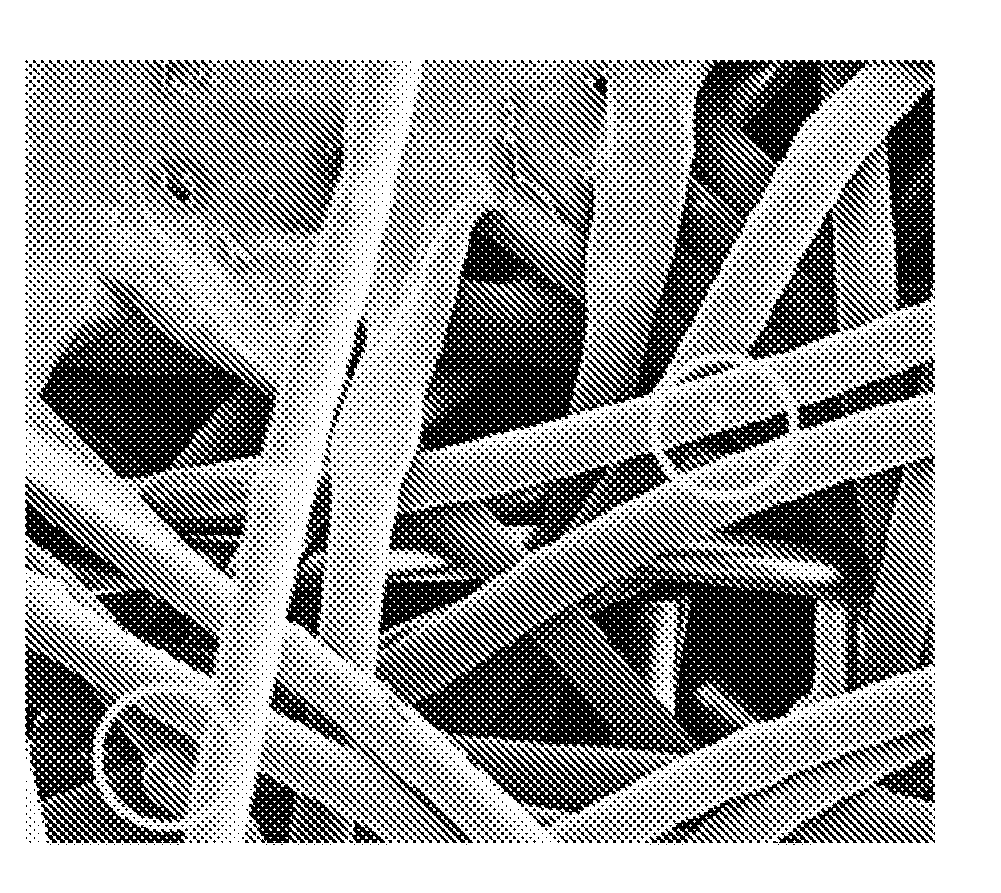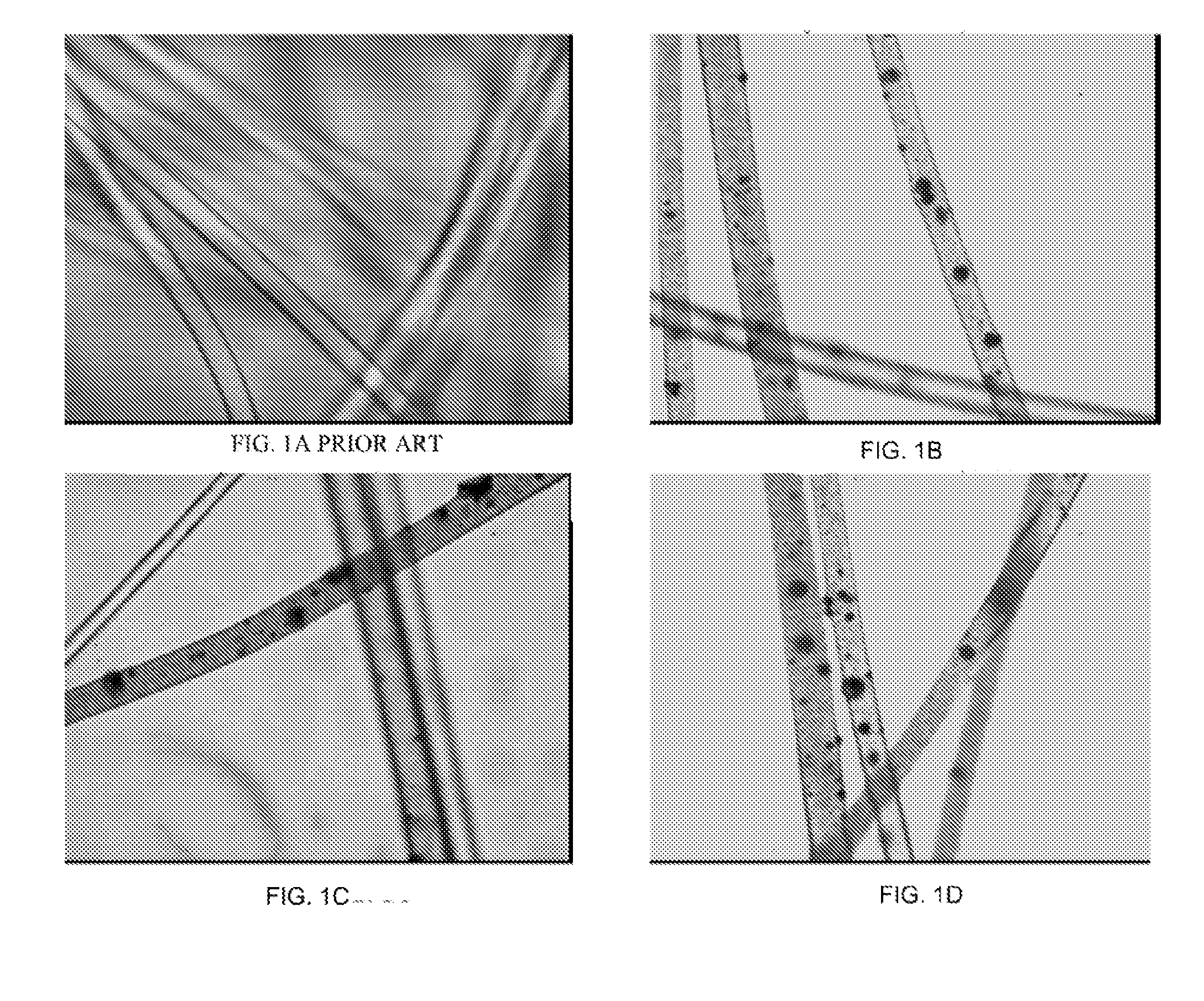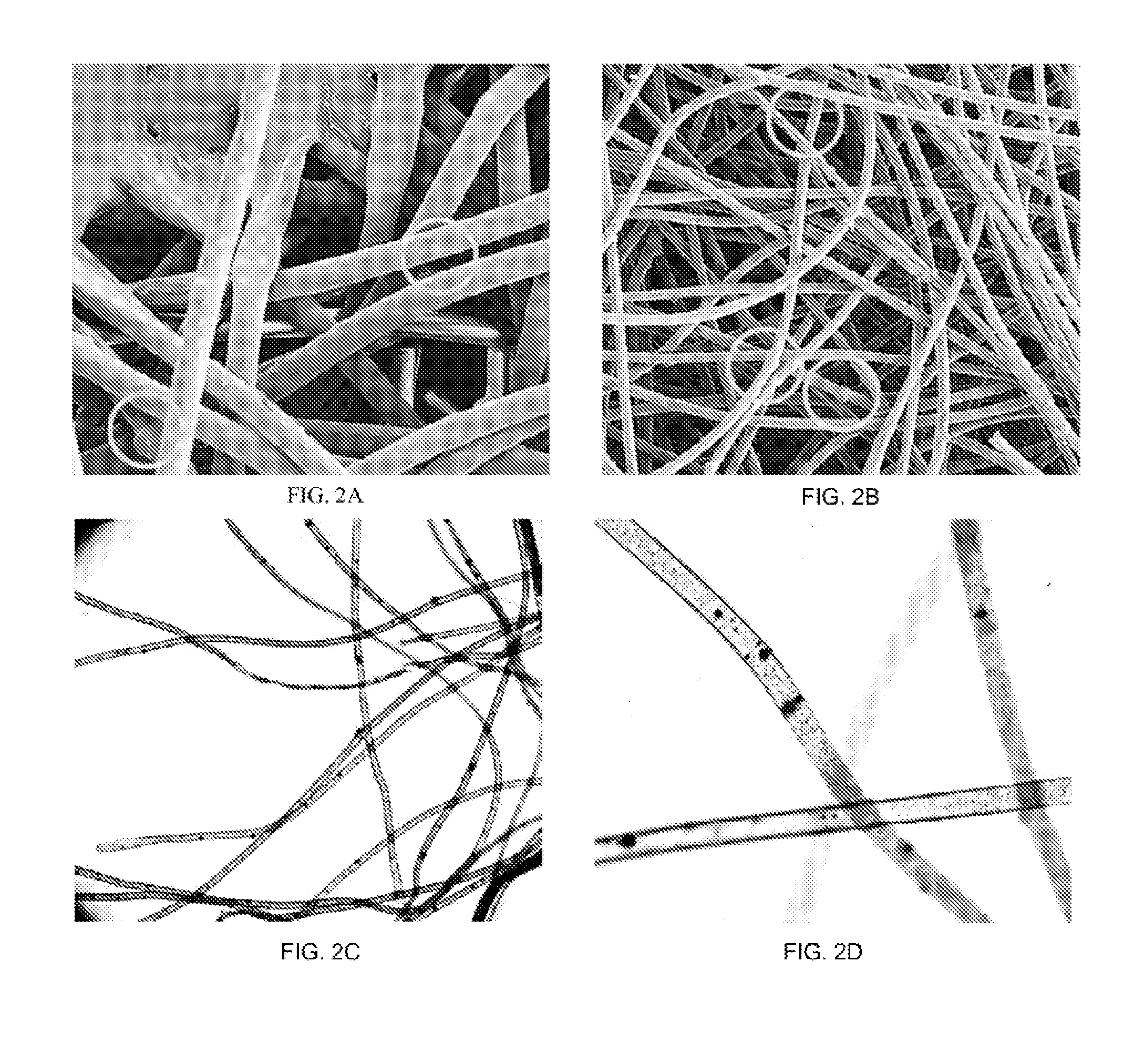Metal detectable fiber and articles formed from the same
a metal detection and detection technology, applied in the field of polymer composite fibers, can solve the problems of plastics being excluded from some environments, little attention has been paid to the unique problems associated with stainless steel particulate, and the use of stainless steel particle filled fibers is difficult to achieve in the controlled manufacturing site,
- Summary
- Abstract
- Description
- Claims
- Application Information
AI Technical Summary
Benefits of technology
Problems solved by technology
Method used
Image
Examples
example 1
[0048]Spherical stainless steel particulate (430 series) having a Poisson size distribution and an average particle size of 12 microns is mixed into polypropylene (PP) to form pellets with a particulate loading of 12 percent. The particles are melt-spun by running through a five screen of 40 mesh, 100 mesh, (34 micron), 60 mesh, and 31 mesh. The melt is then drawn to a fiber as shown in FIGS. 1B-1D. Some of the particulate is noted to be flattened or misshaped. The resulting. The resulting fibers where formed into a non-woven cloth and subjected to metal detector response on a Loma IQ3+ balanced coil metal detector alone or with various food products of a box of 8 packages of crackers, 1 pound of chicken on a tray and plastic wrapped, or pizza in a cardboard box. The results are provided in Table 2 for various sizes of clothes and fold configures. The values in millivolts for triplicate repeats with the threshold detections being noted.
TABLE 112% by weight stainless steel particles ...
example 2
[0050]The process of Example 1 is repeated with like conditions except that a 10% by weight sheath of PP devoid of stainless steel particulate The melt pumps for the sheath and core polymers are set to produce a ratio of 90%:10% of the cross sectional area of each fiber occupied by the polymeric core and particulate loaded core, respectively. The properties are noted to be superior to that to Example 1 with the addition of a surface treatment to enhance water absorption to 600% of the fiber mass for a non-woven fabric. The fiber is shown in FIGS. 2A-2D. The resulting fibers where formed into a non-woven cloth and subjected to metal detector response on a Loma IQ3+ balanced coil metal detector alone or with various food products of a box of 8 packages of crackers, 1 pound of chicken on a tray and plastic wrapped, or pizza in a cardboard box. The results are provided in Table 4 for various sizes of clothes and fold configures. The values in millivolts for triplicate repeats with the t...
PUM
| Property | Measurement | Unit |
|---|---|---|
| Diameter | aaaaa | aaaaa |
| Diameter | aaaaa | aaaaa |
| Weight | aaaaa | aaaaa |
Abstract
Description
Claims
Application Information
 Login to View More
Login to View More - R&D
- Intellectual Property
- Life Sciences
- Materials
- Tech Scout
- Unparalleled Data Quality
- Higher Quality Content
- 60% Fewer Hallucinations
Browse by: Latest US Patents, China's latest patents, Technical Efficacy Thesaurus, Application Domain, Technology Topic, Popular Technical Reports.
© 2025 PatSnap. All rights reserved.Legal|Privacy policy|Modern Slavery Act Transparency Statement|Sitemap|About US| Contact US: help@patsnap.com



